ReservoirSimulation
- 格式:pdf
- 大小:2.24 MB
- 文档页数:57
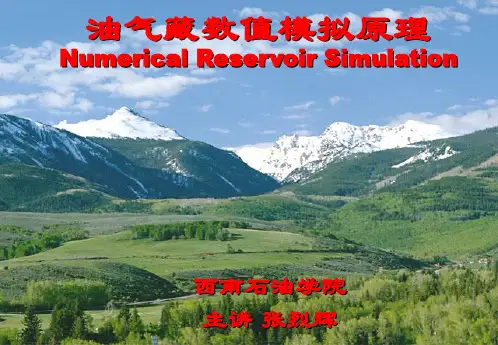
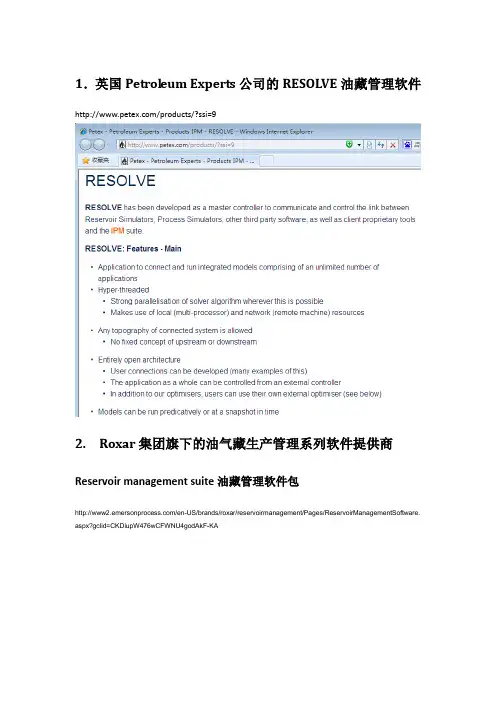
1.英国Petroleum Experts公司的RESOLVE油藏管理软件/products/?ssi=92. Roxar集团旗下的油气藏生产管理系列软件提供商Reservoir management suite油藏管理软件包/en-US/brands/roxar/reservoirmanagement/Pages/ReservoirManagementSoftware. aspx?gclid=CKDiupW476wCFWNU4godAkF-KAReservoir Simulation Solutions油藏模拟解决方案/en-US/brands/roxar/reservoirmanagement/ReservoirSimulation/Pages/ReservoirSimulation.aspx/Merlin - The Oil & Gas Reservoir SimulatorCamelot - Assisted History Matching4. Intelligent Solutions, Inc. ——小微型数模软件提供商/products.htmIMAGINE——Top-Down,Intelligent Reservoir Modeling快速智能数模软件/PDFs/Brochure-Imagine2010.pdfIMPACT——Surrogate Reservoir Modeling规则井网油藏的实时数模软件/PDFs/Brochure-Impact2010.pdf IMPROVE——Intelligent Production Improvement Through Stimulation & Workover/PDFs/Brochure-Improve2010.pdfImpulse/Impulse.htmImpress/Impress.htm IDEA——Data Driven, Intelligent Modeling/PDFs/Brochure-IDEA2010.pdf 5. Modeling Technologies Center的数模软件http://www.modeltech.ru/products/websim.phpReservoir simulation office软件WebSim网页模拟器——Petroleum Engineering ToolsREPOS——产量优化平台6. 美国德克萨斯州奥斯丁(AUSTIN)大学的石油与地球科学工程研究中心(Center for Petroleum & Geosystems Engineering)/承担RS-JIP项目(Reservoir Simulation Joint Industry Project),获得GPAS、UTCOMP和UT_IRSP三个成果,如下:/rsjip/projects.htmlGPAS——A Fully Implicit, Parallel Compositional SimulatorUTCOMP——An IMPEC Compositional Miscible Gas Flooding SimulatorUT_IRSP——An Integrated Reservoir Simulation System(所以此平台又称IRSS)。
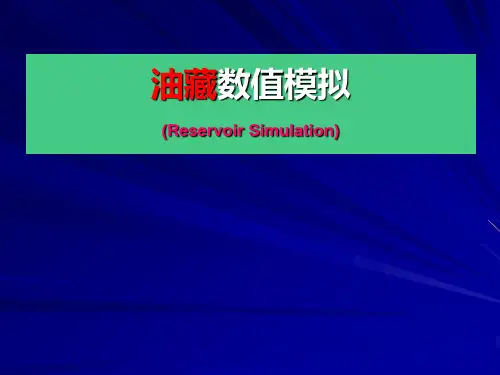
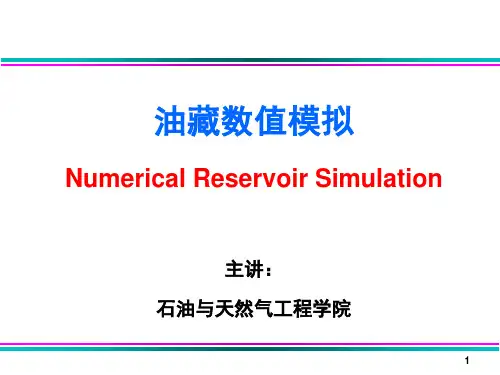
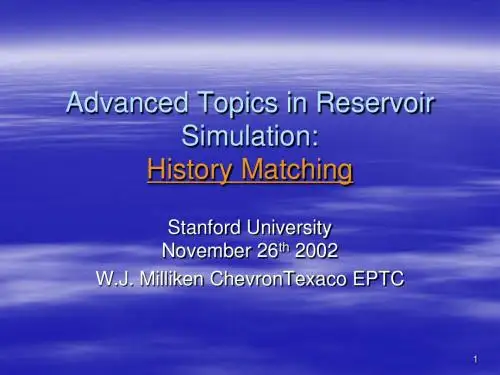
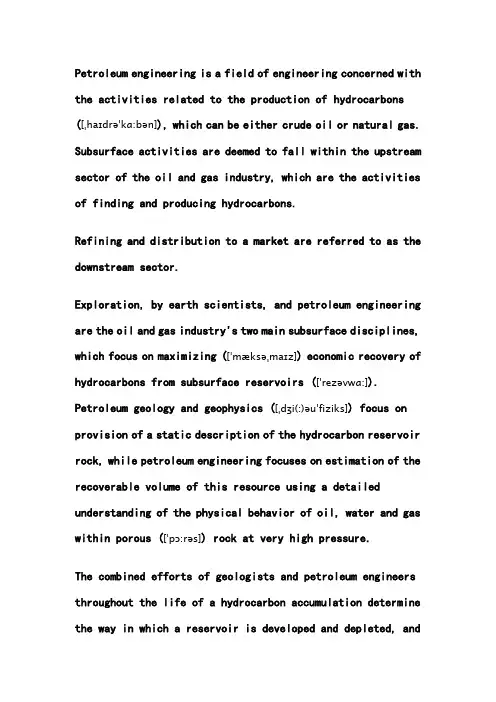
Petroleum engineering is a field of engineering concerned with the activities related to the production of hydrocarbons ([ˌhaɪdrəˈkɑ:bən]), which can be either crude oil or natural gas. Subsurface activities are deemed to fall within the upstream sector of the oil and gas industry, which are the activities of finding and producing hydrocarbons.Refining and distribution to a market are referred to as the downstream sector.Exploration, by earth scientists, and petroleum engineering are the oil and gas industry's two main subsurface disciplines, which focus on maximizing ([ˈmæksəˌmaɪz]) economic recovery of hydrocarbons from subsurface reservoirs ([ˈrezəvwɑ:]). Petroleum geology and geophysics ([ˌdʒi(:)əuˈfiziks]) focus on provision of a static description of the hydrocarbon reservoir rock, while petroleum engineering focuses on estimation of the recoverable volume of this resource using a detailed understanding of the physical behavior of oil, water and gas within porous ([ˈpɔ:rəs]) rock at very high pressure.The combined efforts of geologists and petroleum engineers throughout the life of a hydrocarbon accumulation determine the way in which a reservoir is developed and depleted, andusually they have the highest impact on field economics. Petroleum engineering requires a good knowledge of many other related disciplines, such as geophysics ([ˌdʒi(:)əuˈfiziks]), petroleum geology, formation evaluation (well logging), drilling, economics, reservoir simulation, well engineering, artificial lift systems, and oil and gas facilities engineering.石油工程与碳氢化合物,可以是原油或天然气生产活动有关的工程领域。
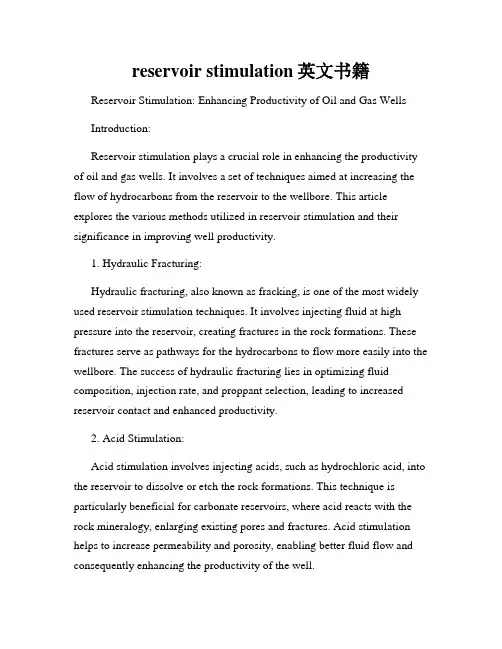
reservoir stimulation英文书籍Reservoir Stimulation: Enhancing Productivity of Oil and Gas WellsIntroduction:Reservoir stimulation plays a crucial role in enhancing the productivity of oil and gas wells. It involves a set of techniques aimed at increasing the flow of hydrocarbons from the reservoir to the wellbore. This article explores the various methods utilized in reservoir stimulation and their significance in improving well productivity.1. Hydraulic Fracturing:Hydraulic fracturing, also known as fracking, is one of the most widely used reservoir stimulation techniques. It involves injecting fluid at high pressure into the reservoir, creating fractures in the rock formations. These fractures serve as pathways for the hydrocarbons to flow more easily into the wellbore. The success of hydraulic fracturing lies in optimizing fluid composition, injection rate, and proppant selection, leading to increased reservoir contact and enhanced productivity.2. Acid Stimulation:Acid stimulation involves injecting acids, such as hydrochloric acid, into the reservoir to dissolve or etch the rock formations. This technique is particularly beneficial for carbonate reservoirs, where acid reacts with the rock mineralogy, enlarging existing pores and fractures. Acid stimulation helps to increase permeability and porosity, enabling better fluid flow and consequently enhancing the productivity of the well.3. Matrix Acidizing:Matrix acidizing is a form of acid stimulation that targets the well matrix rather than creating fractures. It aims at dissolving or removing damaging materials, such as scale and formation damage, from the reservoir rock. Matrix acidizing improves the reservoir's permeability by removing the obstructing substances, thus allowing efficient flow of hydrocarbons to the wellbore.4. Proppant Placement:Proppant placement is a technique associated with hydraulic fracturing. It involves choosing and positioning proppants, such as sand or ceramic particles, within the created fractures. Proppants keep the fractures open, preventing them from closing under pressure, and ensuring the flow of hydrocarbons. Optimizing proppant size and concentration is crucial for achieving efficient proppant placement and maximizing the effectiveness of hydraulic fracturing.5. Chemical EOR (Enhanced Oil Recovery):Chemical enhanced oil recovery (EOR) techniques represent an important aspect of reservoir stimulation. These techniques include polymer flooding, surfactant flooding, and alkaline flooding. Polymer flooding involves injecting polymers into the reservoir to increase the viscosity of injected water, enabling better sweep efficiency. Surfactant flooding focuses on reducing interfacial tension between oil and water, enhancing oil recovery. Alkaline flooding adjusts the pH of injected water, altering the wettability of the reservoir rock and improving oil displacement. Thesechemical EOR methods significantly contribute to reservoir stimulation and maximize oil recovery.6. Thermal Stimulation:Thermal stimulation methods, such as steam injection and in-situ combustion, are widely employed in reservoir stimulation, particularly for heavy oil reservoirs. Steam injection heats the reservoir, reducing the oil's viscosity and improving its mobility. In-situ combustion involves burning a portion of the reservoir's oil, which generates heat, expands gas, and creates pressure, enhancing oil displacement and flow. Thermal stimulation techniques enable the extraction of heavy oil resources, thereby enhancing reservoir productivity.Conclusion:Reservoir stimulation is an essential aspect of the oil and gas industry. Techniques such as hydraulic fracturing, acid stimulation, proppant placement, chemical EOR, and thermal stimulation significantly contribute to increasing well productivity. Understanding and optimizing these methods play a crucial role in maximizing hydrocarbon recovery and ensuring the efficient utilization of reservoir resources. Continual advancements in reservoir stimulation techniques continue to shape the industry, enabling the extraction of valuable oil and gas resources.。
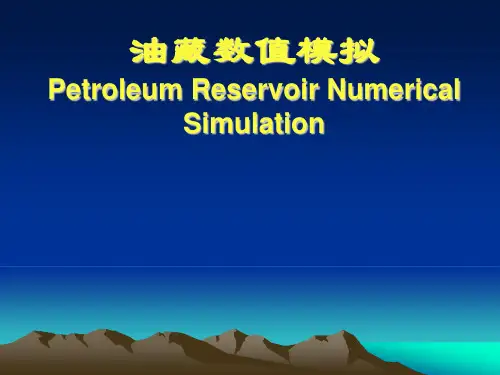
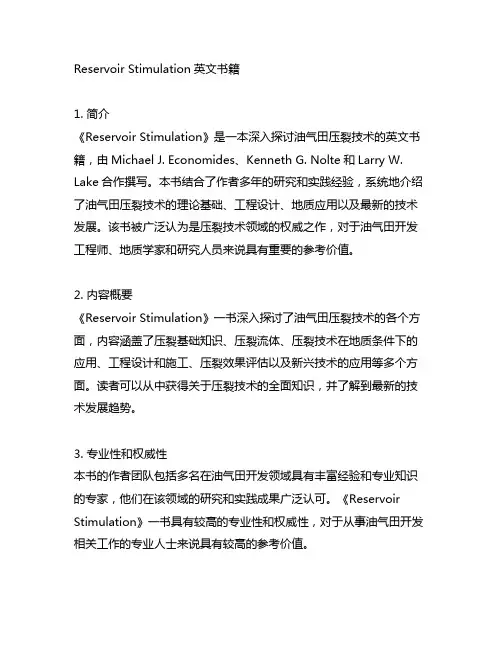
Reservoir Stimulation英文书籍1. 简介《Reservoir Stimulation》是一本深入探讨油气田压裂技术的英文书籍,由Michael J. Economides、Kenneth G. Nolte和Larry W. Lake合作撰写。
本书结合了作者多年的研究和实践经验,系统地介绍了油气田压裂技术的理论基础、工程设计、地质应用以及最新的技术发展。
该书被广泛认为是压裂技术领域的权威之作,对于油气田开发工程师、地质学家和研究人员来说具有重要的参考价值。
2. 内容概要《Reservoir Stimulation》一书深入探讨了油气田压裂技术的各个方面,内容涵盖了压裂基础知识、压裂流体、压裂技术在地质条件下的应用、工程设计和施工、压裂效果评估以及新兴技术的应用等多个方面。
读者可以从中获得关于压裂技术的全面知识,并了解到最新的技术发展趋势。
3. 专业性和权威性本书的作者团队包括多名在油气田开发领域具有丰富经验和专业知识的专家,他们在该领域的研究和实践成果广泛认可。
《Reservoir Stimulation》一书具有较高的专业性和权威性,对于从事油气田开发相关工作的专业人士来说具有较高的参考价值。
4. 实用性和应用性除了理论知识外,本书还对压裂技术在实际工程中的应用进行了深入的讨论,为读者提供了丰富的案例分析和实用经验。
读者可以通过学习本书中的内容,对油气田压裂技术在实际工程中的应用有更深入的了解,并可以将相关知识应用到自己的工作实践中。
5. 结语《Reservoir Stimulation》一书是一本在油气田压裂技术领域具有重要地位的英文专业著作,其内容全面、权威,具有较高的专业性和实用性。
本书适用于从事油气田开发工作的工程师、地质学家和研究人员,是一部不可多得的参考读物。
通过学习本书,读者可以掌握最新的压裂技术知识,提高工作水平和业务能力。
以上就是对《Reservoir Stimulation》一书的简要介绍,希望对您有所帮助。
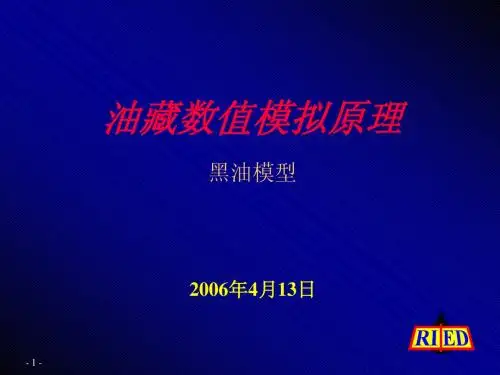

Welcome and IntroductionWhat We Do•Reservoir Simulation SoftwareDevelopment•Reservoir Simulation Software Licensing •Specialized Consulting Services •Customized Training •Collaborative ResearchCyclic Steam Stimulation (CSS) modelWhat’s New at CMG?Dr. Long Nghiem -Sept 1, 1977Ken Dedeluk CEODr. Long NghiemVice President R&D(Employee #1) Dr. Khalid AzizFounder & DeanEmeritus StanfordWhat’s New at CMG?Deep Bench of Intellectual Capital More than HALF of our 207 employees are dedicated to R&DTechnical StrengthAs of June 30, 2017Calgary, AlbertaHouston, TexasBogota, ColombiaRio de Janeiro, BrazilDubai, UAELondon, UKKuala Lumpur,MalaysiaBeijing, ChinaNew Delhi, IndiaAbu Dhabi, UAEKhartoum, SudanLagos, NigeriaMoscow,Russian FederationJakarta, IndonesiaMexico City, MexicoCairo, EgyptGlobal Reach59Countries90%Top-25 Public Oil Companies, by ProductionNearing 25 Years of PartnershipCNPC & PetroChina -RIPED(1988)-Xinjiang (1996) -Yumen(1996)-Liaohe(1999)-Huabei(2000)-Changqing(2001) -Tuha(2001)-Daqing(2002)-Great Wall(2009) -Jilin (2011)-Jidong(2014)Sinopec-Henan(1996)-Jiangsu (1998)-Shengli(1998)-Zhongyuan(2000)-Jianghan(2010)-PEPRIS(2014)-Northwest (2014)CNOOC-COSL (2005)-RC (2009)-Tianjin (2011)-ETSL (2012)Sinochem(2012)Tianshi(2014)BPShellUniversitiesSWPI (1998)UOG (2011)NEPU (2013)CUP (2013)XJTU(2015)COFLOWWhat is CoFlow?Integrated Reservoir, Production System and Geomechanics Modelling Environment Better engineering for high-stakes offshore plays•Offshore: capital intensive•Difficult to make changes after deploymentReduce the cycle time from concept to field•Foster collaboration amongst team members, disciplines •Guided task workflows with ability to customizeMinimize deferred productionHistoryTypical Challenges in Current IPSM Workflows Conventional Modelling Process:•Inherently sequentialLacks timely feedback•Highly distributed inefficient−Maintain many tools, manyfiles−Large number of files andfolder management required−Inconsistencies anddiscontinuities at every step•Significant staffing and trainingchallenges•Tedious to incorporate uncertaintyand optimizationCoFlow: Key Differentiators•Multi-Reservoir−Different reservoirs producing to a single platform−Preserve dynamic rock and fluid behaviour of each reservoir•Multi-Disciplinary−Reservoir, Production and Geomechanics collaboration−“Closing-the-loop” with continuous feedback between disciplines•Multi-Fidelity−Fit-for-purpose fidelity models for each discipline−Combine into a single high-fidelity model•Multi-User−First application where 3 different disciplines can truly collaborate on the same platform •Integrated Uncertainty and Optimization Framework−End-to-end integrated History Matching (HM), Optimization & Uncertainty Assessment−Enables best-in-class HM and lifecycle optimizations workflowsMulti-Fidelity ExamplesReservoir Recovery Optimization+All within the same tool!Subsidence Estimates+Short-Term Forecast &Network Optimization+Production EngineerHi-Fi GeomechCompaction tablesReservoir EngineerHi-Fi ReservoirDecline CurvesQPGeomechanics EngineerHi-Fi FacilityLift TablesHigh FidelityLow FidelityTeam MemberPNAgenda•CoFlow’s Approach to IPSM−Typical challenges in current IPSM workflows −Benefits of CoFlow •System Selection Case Study−Reservoir engineering−Production engineering−IPSM modelling−Geomechanics−Integrated optimization •ConclusionsNew Synthetic Case Study Synthetic development asset case study:•Contrived, but realistic Brazil pre-salt scenario •Large development area; supports staged production systems•Used for field-scale demonstrations and training:−Large scale, heterogeneous reservoirs with EoS fluids;fluid blends; history matching; forecasting−Production system selection and design optionassessments (E.g. subsea processing, smart wells)•Test reservoir to indicate deployment readiness −S imilar properties to partners’ areas of interestGibbs, P.B et al., 2003Ref: Internal CoFlow Report, Vasilisa Nekhorosheva et.al.Solving A Real Problem•Multi-reservoir, ultra-deepwater asset(2500 m)−Different properties, fluids andcharacteristics in each reservoir•Combined production using FPSO(limit 23850 m3/d or 150,000 bbl/d)•Analyzed EOR schemes and operatingstrategies•Performed well design, artificial liftanalysis, facility design•Designed optimum gas-reinjection schemeReservoir & Geomechanics Properties*Carbonate:–201.5 k active cells–10 wells planned–High level of Heterogeneity–Multiple faciesSandstone–101.2 k active cells–7 wells planned–Low level of HeterogeneityGeomechanics Fidelity Levels:–Single compressibility–Compaction tables–One-way and two-way coupling* SPE181427 SPE Annual Technical Conference and Exhibition, 2016Fluid PropertiesProperty Carbonate Sandstone Initial reservoir pressure (kPa)5244057690 Initial reservoir (°C)95 (368 K)115 (388 K) Bubble point pressure (kPa)2648540174 Solution GOR (m3/m3)93200 Oil API Gravity35.928.2CoFlow users can easily see theproperties and behaviour of variousfluid models and blends Sandstone EOS FluidBlended EOS FluidCarbonate EOS FluidFluid Blending and Multi-Fidelity•Universal Black Oil (UBO)•K-value•Equation of StateFreedom to use different fidelities in different sectionsCoFlow allows users to tailor the rigor of fluids calculations to theplace where it is neededReservoir Model and Multi-Fidelity•Refined discretized reservoir model (High Fidelity)•Upscaled discretized reservoir model (Medium)•Decline curve model (Low)•Use different fidelity for different objectivesNot Recommended Use with CautionRecommendedWell Modelling, RE-PE Collaboration & Multi-FidelityFidelity levels:•High fidelity •Medium fidelity •Low fidelity•Lift tablesWell design:•Well locations (RE)•Reservoir results (RE)•Optimum completions (PE)•Collaborative work on single toolTypical Carbonate WellTypical Sandstone WellIdentify impact of:•Tubing size•Artificial lift in wellsNodal analysis performed at different states of reservoir (every 5 years); More collaboration•Insulation quality•Wellhead pressureWell Design ConsiderationsTubing Size SensitivityThermal Sensitivity52% gainCoFlow’s nodal analysis capability brings an interactive flexibility to welldesign sensitivity studiesProduction Facility Model Fidelity levels:•High fidelity•Medium fidelity•Low fidelity•Group controls •Lift tables Facility design:•FPSO location •Pipe design •Artificial lift considerations CatenaryriserLazy-wave riserCoFlow supports collaboration using highly coupled simulations, even in a rapidly changing system selection anddesign studyFacility Design Considerations:RE-PE Collaboration Again •Carbonate reservoir undergoing significant pressure depletion−A/L options: Gas-lift or ESP−G/L found to be unsuitable because of low reservoir pressure−ESP found unsuitable because of low rate•Decision 1:Subsea manifold approach for Carbonate wells, individual pipes for Sandstone wells•Decision 2:Produced gas compression and re-injection to maintain reservoir pressure−Triggers to choke back producers to prevent excess gas breakthrough−Reduced degree of gas compression with timeCarbonate FacilitySandstone FacilityIntegratedFacilityResults: Production and Gas RecyclingR a t e s m 3/dFPSO liquid rate limit 23850 m 3/d (150,000 bpd)Successfulimplementation of gas separation,compression, re-injectionRates m 3/dHuge pressure depletion with primary productionLiquid productionconstraint reachedResults: Integrated Uncertainty AssessmentCarb. Cum. Oil ProductionUncertainty Sand. Cum. Oil ProductionUncertaintyUncertainty parameters:•Fluid contacts •Rel-perms •Rock compressibility •Perm. Anisotropy For both reservoirsP50: 29 Mm3 P50: 143 Mm3Workflow SummaryParameterize anything, at any step, achieveend-to-end uncertainty assessment andoptimizationConclusions•Seamless integration of various discipline instead of maintaining different tools, files, projects, etc. was achieved using CoFlow. True collaboration withcontinuous feedback between different disciplines•Multi-discipline, multi-reservoir, multi-fidelity tool approach to perform IPSMmodelling for an ultra deepwater asset (and onshore).•Complex fluid blending modelled in the surface facility.•Extensive analysis done to select well design and facility configuration.•Easily integrate subsurface uncertainty into selection and design decisions.•Extensible to include custom IP and workflows.•Fully coupled, implicit solution; consistent and reliable short and long-termforecastsUsing CoFlow, achieve a significant reduction inengineering costs due to shorter cycle times, bettercollaboration and more workflow automationIn Closing,1.Thank you for support of Beijing Union Science and Technology and CMG. Your success is our success.2.Recognize and commend Beijing UNIONST for their outstanding work and excellent support of our mutual customers and partners in China.3.Welcome. May you find value and learnings from this week’s Technical Workshop.谢谢CMG’s VisionTo be the leading developer and supplier of dynamic reservoir technologies in the WORLD。
《油藏数值模拟》教学大纲一、课程基本信息1、课程英文名称:Reservoir Simulation2、课程类别:专业模块课程3、课程学时:总学时32,实验学时 24、学分:25、先修课程:开发地质学,油层物理,渗流力学,试井分析6、适用专业:石油工程7、大纲执笔:开发研究所,郭肖8、大纲审批:石油工程学院学术委员会9、制定(修订)时间:2006.11二、课程性质、目的与任务油藏数值模拟技术是迄今为止定量描述在非均质地层中多相流体流动规律的唯一方法,它作为油气田开发研究的一项重要手段,占有举足轻重的地位。
在理论上用于探索多孔介质中各种复杂渗流问题的规律,在工程上作为开发方案设计、动态监测、开发调整、反求参数、提高采收率的有效手段,能为油气田开发中各种技术措施的制定提供理论依据。
该课程是以流体在储层中的渗流为基础,是地质、油藏描述、渗流、油藏工程、试井、计算数学、计算机等学科的交叉学科。
本课程主要讲授油藏数值模拟的基本方法、理论和基本原理,以及如何应用油藏数值模拟技术分析现场问题和解决实际问题,使学生掌握油藏数值模拟的基本过程和步骤以及油藏数值模拟的基本原理、方法及其简单应用,毕业后能够适应科学研究和现场生产的需要。
三、课程的基本要求通过学习《油藏数值模拟》课程,要求学生重点掌握油藏数值模拟的基本概念、基本内容、基本步骤以及基本原理,并结合教学实验以及课堂实例演示和分析,初步做到如何应用所学知识对一个简单的具体油藏进行实际模拟分析。
四、教学内容、要求及学时分配:第一章 绪论(3学时)主要内容:油藏模拟的概念、内容、步骤;为什么做油藏模拟;油藏模拟发展概况。
重 点:油藏模拟的内容和步骤难 点:油藏模拟的本质特征以及与其它研究方法的异同第二章 基本流动方程的建立(4学时)主要内容:岩石和流体的性质、数学模型的分类、数学模型的建立步骤;单相和多相流的达西定律;单相和多相流的连续性方程和渗流方程的建立;定解条件。
专利名称:Reservoir Simulation发明人:Hugh Hales,Daniel Weber,Ben Hardy,BradBundy,Larry Baxter申请号:US11570218申请日:20050604公开号:US20080167849A1公开日:20080710专利内容由知识产权出版社提供专利附图:摘要:Disclosed are methods for simulating pressures and saturations of oil, gas, and water in an oil reservoir with production and injection wells, which include (1) using of new approximating linear algebraic (finite difference) equations that more accuratelyrepresent actual pressures by basing the equations on new functional forms: ln(r) or 1/r, (2) solve the set equations using by defining a coarse grid array and a fine grid array nested in the fine grid array, and solving the coarse grid array and using the resulting solution to fix points in the fine grid array before it is solved, and (3) defining and solving a dynamic grid array based upon constant saturation contours.申请人:Hugh Hales,Daniel Weber,Ben Hardy,Brad Bundy,Larry Baxter地址:West Valley UT US,Provo UT US,Calgary CA,Mountain View CA US,Orem UT US 国籍:US,US,CA,US,US更多信息请下载全文后查看。
专利名称:PETROLEUM RESERVOIR SIMULATION AND CHARACTERIZATION SYSTEM ANDMETHOD发明人:Anderson, Roger mont-Doherty Earth Obser.,He, WeiLamont-Doherty EarthObservatory,Xu, LiquingLamont-DohertyEarth Observatory,Boulanger,AlbertLamont-Doherty EarthObservatory,Winston, JodyLamont-DohertyEarth Observatory,Mello, Ulisses,Wiggins,Wendell申请号:EP00970940.3申请日:20001013公开号:EP1247238A1公开日:20021009专利内容由知识产权出版社提供摘要:A method and system for providing, in a single intranet, internet, or World Wide Web-accessible interface, initiation of, interactive adjustments to, and access to the outputs of, an integrated workflow for a plurality of analytical computer applications for characterization and analysis of the traits and optimal management of the extraction of oil, gas, and water from a subsurface petroleum reservoir. By wrapping a number of disparate analytical application tools in a seamless, and remotely accessible, package reduces incompatibiity problems caused by the disparate nature of petroleum analysis methods and the data used therein.申请人:THE TRUSTEES OF COLUMBIA UNIVERSITY IN THE CITY OF NEW YORK 地址:West 116th Street and Broadway New York,New York 10027 US国籍:US代理机构:Lucas, Brian Ronald更多信息请下载全文后查看。